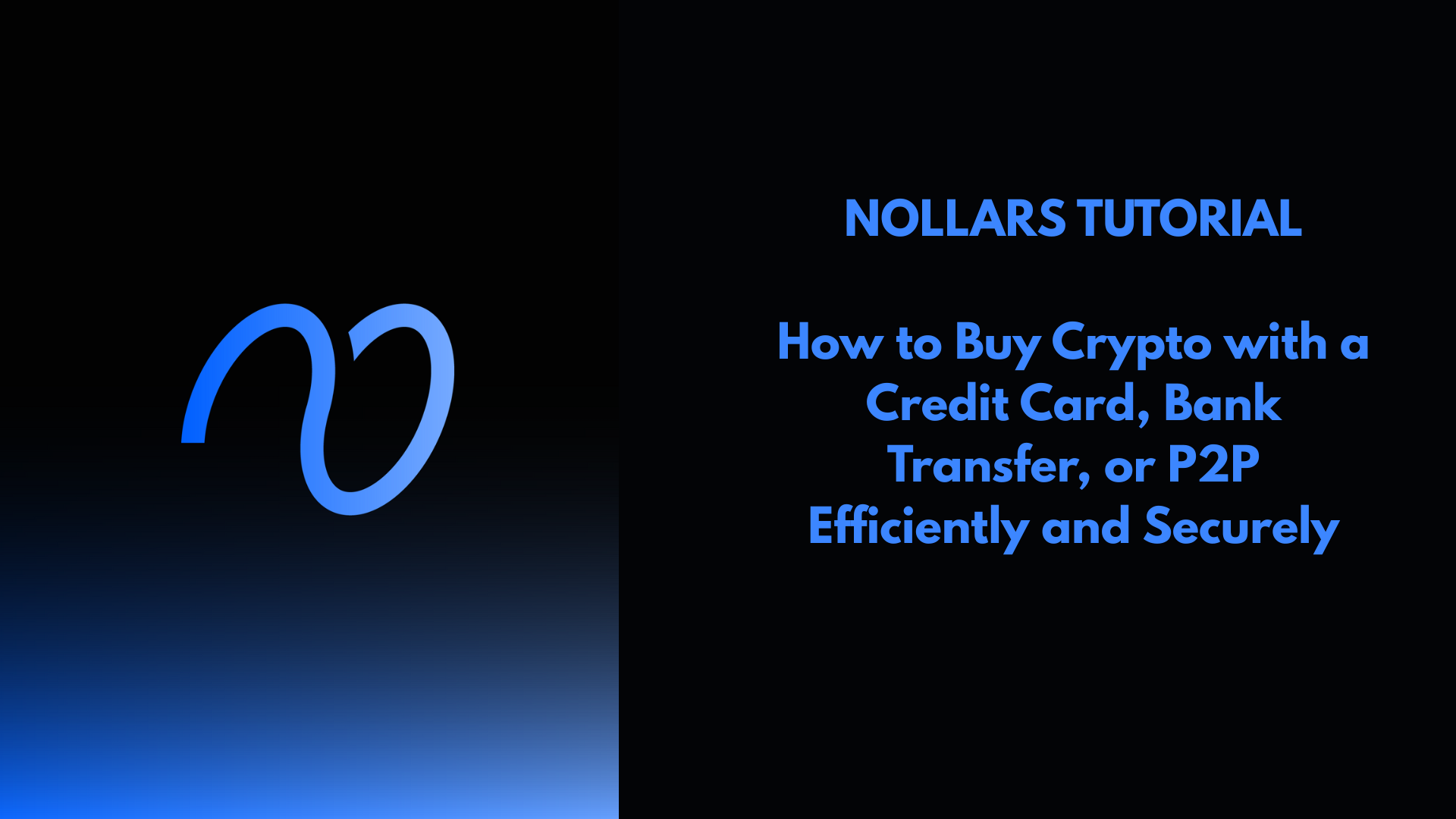Buying cryptocurrency can feel pretty straightforward if you use a credit card, bank transfer, or a peer-to-peer (P2P) platform. Every method has its perks, depending on how fast you want your crypto, what fees you’re willing to pay, and how much privacy you need.
Honestly, if you want crypto right this second, a credit card’s the fastest. Bank transfers tend to be cheaper, and P2P trading gives you more control and flexibility.

Credit cards let you buy instantly on most exchanges, so they’re popular for quick grabs. Bank transfers take longer but usually cost less, which is nice if you’re moving bigger amounts.
P2P platforms connect you directly with other people, sometimes letting you skip strict verification and pick from more payment options.
Knowing these choices helps you decide on the best way to buy crypto for your situation. Here’s a breakdown of what to expect from each method—and how to get started safely.
Understanding Payment Methods for Crypto Purchases
You’ve got a few ways to buy cryptocurrency, and each works a little differently. Timing, fees, and convenience all depend on which route you pick.
Payment methods also differ in how secure or speedy they are. If you’re not sure which to use, here’s how each one works in real life.
Credit Card: How It Works
Buying crypto with a credit card is about as quick as it gets. Enter your card details, punch in the amount, and the platform charges your card just like any online purchase.
You get your crypto almost instantly. That’s the upside, but you’ll probably pay higher fees for the speed.
Some credit card companies treat crypto purchases as cash advances, which can sneak in extra charges and interest. It’s a bit annoying.
Banks usually ask for verification steps—sometimes a one-time password. It depends on both your card provider and the exchange.
Not every card works everywhere, so double-check that your card’s accepted before you get your hopes up.
Bank Transfer: Overview and Process
Bank transfers are a classic way to buy crypto. You send money straight from your bank account to the exchange.
This method is slower than credit card payments, usually taking anywhere from a day to three, depending on your bank and where you live.
Fees tend to be lower, but they aren’t always predictable. Every bank and exchange does things a little differently.
To start, you’ll use the exchange’s bank details—like their account number and a reference code. Once your money lands, you can buy your crypto.
For bigger amounts, bank transfers often make the most sense. They’re usually secure and don’t eat up your funds with fees.
Peer-to-Peer (P2P) Transactions Explained
P2P crypto buying connects you directly with sellers—no middleman. Most platforms use escrow to keep things safe until both sides agree the deal’s done.
You can pay with whatever method you and the seller agree on: cash, bank transfer, or even local payment apps. Prices vary because sellers set them, so sometimes you get a deal.
This route gives you more privacy, but you need to stay sharp. Always check seller reviews and stick to reputable P2P platforms.
P2P is handy if your country limits other payment methods, or if you just want more options.
For more on P2P exchanges, see Crypto P2P exchanges.
Step-by-Step Guide to Buying Crypto
To buy crypto, you’ll need to pick a solid platform, set up your account, choose how you’ll pay, and make sure your assets stay safe. Each step matters if you want things to go smoothly.
Choosing a Trusted Exchange or Platform
Start by picking a platform you trust. Coinbase, Binance, and CEX.IO are big names, but there are others out there.
You want good security, clear fees, and access to the coins you actually care about.
Look for sites that offer several payment methods—credit cards, bank transfers, or P2P trading. Real user reviews can tell you a lot about how they operate.
Some places ask for strict identity checks, while others—especially decentralized or P2P platforms—let you buy with less hassle. If privacy matters to you, that’s something to consider.
Verifying Your Identity and Account Setup
Once you’ve picked your platform, you’ll usually need to make an account and prove who you are. That means sharing your name, address, and a photo ID.
Platforms do this to follow the rules and keep out scammers. It’s not always instant—sometimes it takes a few minutes, sometimes it drags on for days.
Set a strong password and turn on two-factor authentication. It’s a pain, but it really does help.
When you finish verification, you often get higher purchase limits and more ways to pay. It’s worth doing if you plan to buy more than just a little.
Executing the Purchase with Your Preferred Method
Now you’re ready to buy. If you use a credit or debit card, the crypto usually lands in your account right after payment.
Bank transfers can take longer, but you’ll probably save on fees. Some platforms also let you buy through P2P exchanges, where you trade directly with other people.
That can mean more payment choices, but it sometimes requires a bit of back-and-forth.
Enter how much you want, double-check the fees and prices, and confirm the deal. Take your time—mistakes here can be expensive or slow to fix.
Confirming and Securing Your Crypto Assets
After you buy, your crypto should show up in your exchange wallet. Always check that the amount’s right and the transaction went through.
For extra safety, consider moving your crypto to a personal wallet. Hardware wallets or secure mobile wallets work well.
Write down your recovery phrases and keep them somewhere safe. If you lose them, you’re out of luck.
Keeping your assets in your own wallet protects you if the exchange gets hacked or shuts down. It’s a step a lot of people skip, but maybe don’t.
Pros, Cons, and Risks of Each Payment Method
Every way to buy crypto comes with its own trade-offs. Costs, speed, and safety all shift depending on which method you pick.
Credit Card: Fees and Security Considerations
Credit cards make buying crypto super fast and easy. You can react fast if the market’s moving.
But you’ll pay for that speed—fees can be steep, and some cards treat crypto buys as cash advances. That means higher interest kicks in right away.
If you’re not careful, it’s easy to rack up debt. Credit cards do offer some fraud protection, but storing your card info on sketchy sites isn’t worth the risk.
Stick to trusted exchanges and always check for hidden fees.
Bank Transfer: Advantages and Limitations
Bank transfers usually have lower fees, so they’re great for bigger buys. Most exchanges accept them, and it’s a secure way to move money.
You have to wait, though. Transfers can drag on for days, which is frustrating if prices are jumping around.
Some banks get weird about crypto transfers or flag them for review. On the bright side, you can’t overspend since the money comes right from your account.
Just double-check the transfer details to avoid mistakes.
P2P Transactions: Trust and Safety
P2P buying lets you work directly with another person. You can pay with whatever works for both of you—cash, digital wallets, even gift cards sometimes.
The biggest risk here is trust. Always check who you’re dealing with, and use platforms that offer escrow to hold funds until the deal’s done.
Without escrow, scams happen way too often. P2P can also get messy if there’s a dispute.
Still, if you want privacy or need to avoid bank restrictions, it’s a solid option. Just stick to well-known P2P platforms to keep things safer.
| Payment Method | Speed | Fees | Risk Level | Typical Use Case |
|---|---|---|---|---|
| Credit Card | Instant | High | Medium | Quick buys, small amounts |
| Bank Transfer | 1-3 business days | Low | Low | Larger amounts, cost-conscious buyers |
| P2P | Varies | Varies | High without escrow | Privacy, alternative payment methods |
Frequently Asked Questions
Buying crypto with a credit card, bank transfer, or P2P? Each has its own quirks—fees, speed, verification steps, and risk levels. Some platforms make it really easy, others not so much.
What are the steps to buy crypto with a credit card instantly?
First, you’ll need to create an account on a platform that takes credit cards. Then, enter your card details—number, expiry, CVV.
Pick your crypto, type in the amount, and hit buy. If your card and funds check out, the purchase goes through instantly.
Some sites might ask for extra verification, so be ready for that.
How can I buy Bitcoin with my bank account without a lengthy verification process?
A few exchanges and P2P marketplaces let you use bank transfers without heavy KYC (Know Your Customer) checks. Look for no-verification platforms or try decentralized wallets and Bitcoin ATMs.
Just know: you might hit limits on how much you can buy, and the risk goes up. Choose carefully.
What are the best platforms for purchasing cryptocurrency using a debit card?
Big names like Binance let you use debit cards easily, with lots of fiat options. Other exchanges do too, but fees and limits can vary.
Honestly, I’d compare a couple before deciding. Make sure the site feels safe and easy to use.
Where can I buy crypto with the lowest fees using a credit card?
Fees are all over the place—depends on the exchange and your card. Some P2P and no-KYC exchanges offer lower charges, but you’ve got to watch for hidden costs.
Check both the platform’s fees and any cash advance fees from your card company. It pays to shop around before buying.
What are the risks of buying cryptocurrency with a credit card?
You can run into high fees and instant interest, especially if your card treats it as a cash advance. There’s also the risk of fraud or chargebacks.
Credit card limits might keep you from buying as much as you want. Think it through before you swipe.
How do I engage in P2P (Peer-to-Peer) cryptocurrency transactions?
First, you’ll need to make an account on a P2P platform. Some sites might ask you to verify your identity, which can feel a bit tedious, but it’s usually pretty straightforward.
Once you’re set up, you can scroll through offers or post your own if you’re feeling bold. Chat with a trading partner and hash out the terms.
When you both agree, you’ll send the fiat funds using whatever payment method you both like best. After your payment goes through, the crypto gets released right to your wallet.




